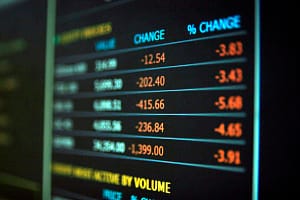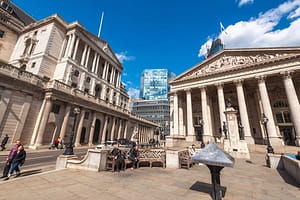There is still a distinct sense of uncertainty in financial markets even after the surprisingly strong recovery seen in January. Was this just a short-lived rebound or will markets continue to rise?
How we interpret this depends on a number of factors: one key factor is the probability of a global recession and how severe it could be, as well as the reaction of central banks.
In view of this scenario, the outcome of which is still unclear, investors are putting themselves in an advantageous position with convertible bonds.
Stephanie Zwick, Head Convertible Bonds at Fisch Asset Management explains, “Very much in the spirit of active investment, they are the equivalent of having a higher equity allocation in the portfolio if the market trend is positive, while a negative scenario automatically results in a higher ‘bond allocation’. Furthermore, convertible bonds also offer additional sources of returns that are not directly dependent on the overall market trend, including M&A.
Many convertible bonds are trading below par
Following the weak performance of convertible bonds last year, the investment universe has changed significantly, and, for some time now, the risk profile has again been very asymmetric, as is typical of this asset class.
This also creates an attractive entry point, regardless of the above-mentioned macroeconomic considerations. For example, almost 70% of all US convertible bonds are now trading below their par value and therefore offer both an effective buffer against further price falls and corresponding recovery potential.
At the same time, since the major sell-off in the first half of 2022, convertible bonds have again increasingly participated in rising underlying share prices. They therefore present the sought-after characteristics of reducing participation when share prices trend lower and then increasing participation during the ensuing recovery.
Small & mid-caps benefit from falling inflation
Smaller and medium-sized companies are well represented in the convertible bond universe, as this asset class is particularly suitable as a financing instrument for innovative and fast-growing young companies.
These have been hardest hit by soaring inflation worldwide. Compared with large corporations, their margins have come under more pressure from rising costs due to their limited pricing power.
This was very evident last year in the poor performance of the Russell 2000, which comprises small and mid-cap US companies, relative to the large-cap S&P 500 index. Conversely, these companies therefore also benefit in particular during periods of declining inflation, as is currently the case, and we expect them to outperform blue chips accordingly.
Favourable valuations spurring on M&A activity
Valuations are providing additional momentum. Various indicators, including book value versus share price, as well as the expected earnings yield, are at their highest since 2001 for small caps relative to the S&P 500.
Low share prices relative to the enterprise value reflect the significant outperformance of large-cap companies in recent years. Favourable valuations, especially as a result of the loss of value in the growth segment over the last 12 months, are now attracting potential buyers.
In addition, acquisition targets’ low levels of debt and companies’ high cash reserves are fuelling M&A activity. We were already seeing clear signs of this in 2022, with a substantial number of redemptions of outstanding convertible bonds triggered by acquisitions.
On a positive note, convertible bond investors often benefit from takeover ratchets that compensate investors on attractive terms in the event of a takeover.
Especially in the case of convertible bonds that are trading bond-like, i.e. well below par, investors can redeem the convertible bond at par and thereby immediately realise the yield to maturity. This provides an additional source of return that is independent of market conditions. We expect takeover activity to remain high within the convertible bond universe, as it contains a particularly large number of growth companies that are potential M&A candidates.
Increase in new issuance
Poor financial market conditions caused new issuance to plummet to record lows last year. We expect more stable conditions, coupled with the sharp rise in interest rates, to lead to a significant increase in issuance activity. This is because the lower coupons offered by convertible bonds make this asset class a very attractive financing instrument due to the saving on interest. Consequently, this is accompanied by a broadening of the investment universe, allowing investors to better diversify their allocation.
All in all, based on the factors set out above, we are positive that the convertible bond asset class will regain its strength and enable investors to achieve strong positive returns again in 2023.”






Leave a Comment